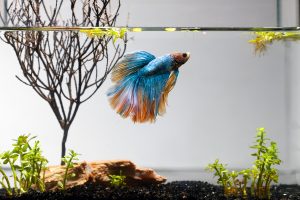
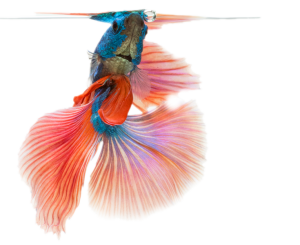
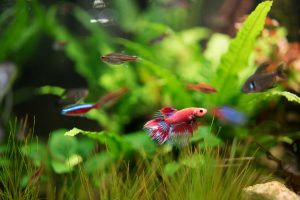
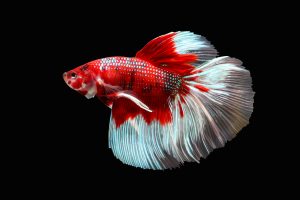
Betta Fish
Betta splendens, commonly known as Betta Fish, are found in Thailand, Cambodia, Laos, and Vietnam. They usually inhabit ditches, rice paddies, shallow pools, and slow-moving streams. To survive in these habitats, they have a unique labyrinth organ, which allows them to breathe air above the water surface, in addition to using their gills like other fish. Contrary to popular belief, Betta Fish should not be kept in small bowls or flower vases. Instead, they should be kept in a filtered and heated aquarium with ample space for decorations and for the Betta to swim around in. The optimal temperature for Betta Fish is between 76° and 84° F. At lower temperatures, they become sluggish and more susceptible to disease. To prevent them from jumping out, it is important to have a secure lid on their tank, especially in small containers. Betta Fish are carnivores and primarily feed on insects and insect larvae in the wild. In aquariums, they thrive on protein-based frozen, pellet, and flake foods. It is also recommended to have plants and other decorations in their tank to provide cover.
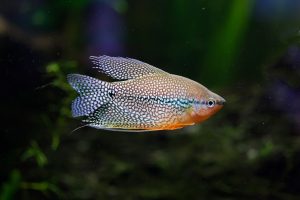
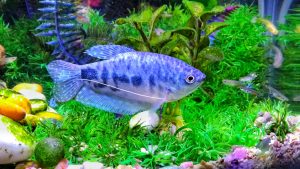
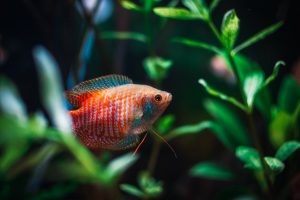
Gouramis
Gouramis are a varied family of fish that possess an incredible adaptation in the form of a labyrinth organ that enables them to breathe air at the surface. This feature allows them to survive in shallow, stagnant, and oxygen-poor water. Some gouramis even make bubble nests to incubate their eggs, while others are mouthbrooders. Their beauty is also remarkable, with males displaying bright colors and longer fins than females. Selective breeding has led to a variety of colors and fin shapes in different species. With proper research and care, these fish can thrive in community aquariums, making them a popular choice for fish enthusiasts. So why not explore the world of gouramis and discover the wonders of nature in your own home?
It should be noted that male gouramis tend to be aggressive towards each other, so they should generally be kept individually. Female gouramis usually tolerate each other well. Mixing different species or color varieties of gouramis should only be done in larger, well-decorated tanks. It's important to remember that blue, three-spot, opaline, gold, and lavender gouramis are all the same fish – they have just been bred for different colors! Gouramis are slow-moving and are best kept with similar-sized fish that are not fin nippers or too active. Larger tetras, livebearers other than fancy guppies, peaceful barbs, most danios, and angelfish can all be good choices. Always consult an aquarium expert before buying any new fish for your aquarium.
